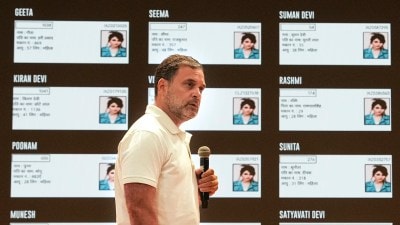Not quite Model Malaysia
Pratap Bhanu Mehta’s critique mixes up the difference between an empirical and a normative argument.

Pratap Bhanu Mehta’s critique (‘Malaysian straitjacket for India’, IE, June 17) of my article (‘Be affirmative’, June 16) mixes up the difference between an empirical and a normative argument. An empirical argument is about the facts of the case; a normative argument is the author’s view of what should be done.
My empirical argument had two components: (a) that quotas in the private sector did not hurt the economic rise of Malaysia; and (b) that quotas, instead of aggravating social conflict, appear to have dampened them, especially because Malaysia’s economic growth rate was so high. Hence my conclusion that if you wish to oppose Indian quotas, do not do so on economic grounds, find some other arguments; and do not assume that quotas only produce conflict. Nothing more was said or intended. Malaysia is certainly not a model for India. The point of comparative analysis is rarely to suggest models for imitation. Rather, the point is to provide food for reflection. Nor did my argument imply that Malaysia’s affirmative action had no darker sides. Two are widely noted, but each has problematic implications for Mehta’s claims.
First, Malaysia is finding it hard to make a transition to a knowledge-based economy, primarily because the quality of a Malaysian graduate, reared in a quota regime, is not very high. But that does not mean that Malaysia has not had a manufacturing revolution. And it is labour-intensive manufacturing that attacks the problem of mass poverty, not knowledge-intensive IT industries, which India has excelled at. Less than two per cent of Malaysia’s population is below the poverty line today; in India that figure is still 20-25 per cent.
Affirmative action is, in my view, bad for the knowledge economy, where skills have to be of a high quality. But affirmative action does not fundamentally hurt labour-intensive manufacturing, in which a large number of jobs, mechanical in nature, do not require high education or skills. Making toys, shoes, shirts, calculators, and simple watches is very different from producing software for greater organisational efficiency at IBM. Labour-intensive manufacturing skills can easily be acquired by India’s lower castes, if given an opportunity. That will also have substantial impact on poverty.
Mehta cites Prime Minister Badawi’s arguments about how affirmative action has “enfeebled” Malays. It would be better to cite Mahathir Mohammed, whose book, The Malay Dilemma, spurred Malaysian quotas and who is, for better or worse, the maker of modern Malaysia. Towards the end of his rule, Mahathir argued that quotas were coming in the way of Malaysia’s transition to a knowledge economy. But he never argued that quotas obstructed the manufacturing revolution. Mehta ignores the distinction between the differential requirements of labour-intensive manufacturing and knowledge-intensive IT. Affirmative action is arguably not bad for labour-intensive manufacturing.
A feeble concept of citizenship is the second dark aspect of Malaysian quotas. Here Mehta is spot on. Malaysia is Malay, Chinese and Indian, but still not fully Malaysian. The affirmative action programme appears to have brought peace, but also a deeply ethnicised Malaysian society. Mahathir emphasised the desirability of a Malaysian identity in the closing years of his rule. Will India’s affirmative action programme, if taken further, undermine Indianness, or promote social inclusion, leading to larger lower-caste stakes in India’s future and making India stronger? This is an important question. Mehta claims that further extension of India’s affirmative action will weaken citizenship and enfeeble Indian nationhood, instead of creating greater social inclusion. I see his claim as a philosophical, not an empirical, one. My own empirical understanding is that South Indian lower castes today have a greater sense of citizenship and everyday confidence than their counterparts in North India, and this has happened largely because of affirmative action in South India. Does Mehta have evidence to prove otherwise?
Mehta is also worried that India’s talent will migrate abroad as a consequence of affirmative action, just as it did from South India in the ’60s. In the ’60s, India’s economy was growing at 3.5 per cent a year. The growth rate is touching 7.5- 8 per cent today. A high growth environment has place both for pre-existing talent and affirmative action. It is not a zero-sum game, as it was in the ’60s. India’s debate over affirmative action has primarily emphasised two kinds of distinctions: between Dalits and the OBCs, and between caste-based and other forms of deprivation. As the government ponders what to do it is time to introduce a sector-specific dimension: labour-intensive manufacturing versus knowledge industries (or high-tech manufacturing). Finally, the debate should not ignore that high growth environments change the way affirmative action works.
The writer is professor of political science, University of Michigan



- 01
- 02
- 03
- 04
- 05




























